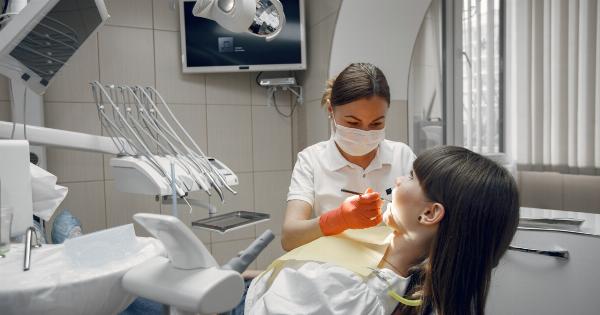Sushi has become increasingly popular around the world, loved for its delicate flavors and beautiful presentation. It is a traditional Japanese dish that typically consists of vinegared rice, seafood, and various vegetables.
While sushi is generally considered a healthy and nutritious choice, there are some hidden hazards that consumers should be aware of. In this article, we will explore the unseen hazards in sushi and discuss ways to mitigate risks.
Mercury Contamination in Fish
One of the major unseen hazards in sushi is the potential for mercury contamination in fish. Mercury is a toxic heavy metal that can accumulate in the bodies of fish, especially those higher up in the food chain.
Large predatory fish such as tuna, swordfish, and king mackerel are known to contain higher levels of mercury.
Allergic Reactions to Seafood
Another risk associated with sushi consumption is allergic reactions to seafood. Many people are allergic to certain types of fish or shellfish and may experience mild to severe allergic symptoms.
Common signs of a seafood allergy include itching, hives, swelling, and difficulty breathing. It is essential for individuals with seafood allergies to be cautious when consuming sushi to avoid any potential allergic reactions.
Bacterial and Parasitic Infections
Raw fish used in sushi can harbor various types of bacteria and parasites, posing health risks to consumers. One well-known parasite is Anisakis, which can be found in certain types of fish, including salmon and mackerel.
When consumed, this parasite can cause an infection known as anisakiasis, leading to symptoms like abdominal pain, nausea, and vomiting.
Cross-Contamination in Sushi Preparation
Cross-contamination is a significant concern in sushi preparation. Sushi chefs often handle various types of raw seafood, including fish, shellfish, and crustaceans.
If proper hygiene practices are not followed, bacteria or pathogens from one type of seafood can contaminate others. This can increase the risk of foodborne illnesses such as Salmonella or E. coli infection.
Pesticide Residues in Vegetables
While the focus is primarily on fish, it is worth mentioning that vegetables used in sushi may also carry their own unseen hazards. Some vegetables, when not properly washed or treated, can contain pesticide residues.
Consuming these residues regularly may have adverse effects on health, including potential long-term consequences.
Sustainable Sourcing of Seafood
Environmental concerns cannot be overlooked when discussing hazards in sushi. Unsustainable fishing practices, such as overfishing or destructive fishing methods, may lead to the depletion of fish populations and harm marine ecosystems.
It is crucial for sushi consumers to choose establishments that prioritize sustainable sourcing of seafood to mitigate these unseen hazards.
Food Fraud and Mislabeling
Food fraud is a global issue that affects various industries, including the sushi market. Mislabeling, where a cheaper or lower-quality fish is sold as a premium species, can lead to both economic and health risks.
Consumers may unknowingly consume fish that is different from what they believe they are eating, potentially impacting their experience and health.
Heavy Reliance on Soy Sauce
Soy sauce is a staple condiment often consumed with sushi. While it adds flavor to the dish, it is important to note its high sodium content.
Heavy reliance on soy sauce can contribute to an excessive sodium intake, which may lead to health problems like high blood pressure or increased risk of cardiovascular diseases.
Preventing Unseen Hazards in Sushi
Despite the potential hazards associated with sushi, there are steps that can be taken to minimize risks and ensure a safer dining experience. Here are some preventive measures:.
1. Choose reputable sushi establishments
When dining out for sushi, opt for established restaurants with a good reputation for quality and food safety. Such establishments are more likely to follow proper handling and storage procedures, reducing the risk of contamination.
2. Cooked or vegetarian options
If concerned about the risks of consuming raw fish, consider trying cooked or vegetarian sushi options.
Many delicious sushi varieties are made with cooked seafood, tofu, or a variety of vegetables, eliminating the potential risks associated with raw fish consumption.
3. Know the source of seafood
Ask the sushi restaurant or supplier about the sourcing practices for their seafood. Seeking establishments that prioritize sustainable fishing practices can help support responsible fishing and reduce environmental hazards.
4. Educate yourself about seafood choices
Stay informed about which fish species are more likely to be contaminated with mercury or have sustainability concerns. This can help you make better choices when ordering sushi and reduce your exposure to unseen hazards.
5. Practice good hygiene
Washing hands before and after handling sushi, using clean utensils, and practicing proper food safety measures can significantly reduce the risk of bacterial and parasitic infections. This is especially important if you are making sushi at home.
Conclusion
Sushi is undoubtedly a culinary delight enjoyed by people around the world. However, it is crucial to be aware of the unseen hazards associated with this popular dish.
From mercury contamination in fish to allergic reactions and cross-contamination, there are risks that need to be considered. By adopting preventive measures, such as choosing reputable establishments, opting for cooked or vegetarian options, and practicing good hygiene, individuals can enjoy sushi with reduced risks.
It is essential to stay informed, make informed choices, and prioritize both personal health and the health of our oceans.































